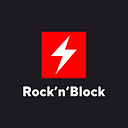10 Core Features for NFT Marketplace Development
Non-Fungible Tokens (NFTs) have caused a sensation worldwide, as they have transformed the concept of ownership and digital assets. This article investigates the primary characteristics that are fundamental in the NFT marketplaces development, illuminating how these aspects stimulate progress, safety, and user participation in this rapidly developing context.
What is NFT Marketplace?
In the era of digital innovation, NFTs have become one of the most intriguing and revolutionary developments. In essence, NFTs are digital tokens representing the ownership of singular and unique items, whether they are digital art, music, virtual real estate, or even tweets.
An NFT marketplace is a digital platform where individuals can explore, purchase, sell, and exchange non-fungible tokens. It combines elements of a digital auction house, art gallery, and stock exchange, tailored specifically for these unique digital assets. Such marketplaces offer a safe and intuitive arena for creators, collectors, and enthusiasts to interact with one-of-a-kind digital assets.
Key Features for NFT Marketplace Development
Whether you are a beginner interested in entering the world of NFTs or contemplating building your own NFT marketplace, below are the key ten features to evaluate.
Dive deeper into the intricate world of NFT marketplace development — explore our full article for an in-depth look.
1. User-Friendly Interface
Intuitive navigation, lucid instructions, and an attractive design will make the platform more accessible and enjoyable for users.
2. Cross-Chain Support
NFT marketplaces that incorporate cross-chain support enable NFTs to move seamlessly across multiple blockchains, providing a larger and more diverse marketplace for digital assets. This not only gives users more options but also allows for greater interoperability, enabling NFTs to interact with various decentralized applications and services.
3. Supporting multiple payment options
The platforms improve accessibility and inclusivity by offering multiple payment methods, including cryptocurrencies, credit cards, and other traditional forms of payment.
This ensures that the NFT marketplace caters to a diverse global audience of users from different backgrounds and regions.
4. Minting Tools
Minting tools are crucial for artists and content creators, as they enable users to easily create NFTs by uploading their digital content, setting properties such as royalties, and defining ownership rights.
5. Discovery: Browsing, Storing, and Search
A search tool for NFT marketplace enables users to effortlessly browse and discover NFTs. It allows users to explore, locate, and engage with a wide variety of digital assets, including art, collectibles, virtual real estate, and more.
6. Licensing and Copyright Management
To protect the rights of creators and collectors, implement licensing and copyright management features. This guarantees the automatic distribution of royalties and the upholding of intellectual property rights.
7. Security and Compliance
The integrity of the blockchain, as well as users’ trust, must be protected at all costs. The implementation of rigorous security measures is crucial to detect and mitigate potential threats or vulnerabilities.
Furthermore, NFT marketplaces must deal with the changing regulatory environment and tackle matters such as safeguarding intellectual property rights, adhering to tax requirements, and complying with anti-money laundering (AML) and know-your-customer (KYC) obligations in accordance with the law in each jurisdiction.
8. Customizable Smart Contracts
Customizable smart contracts play a key role in the development of NFT marketplaces, enabling flexibility and adaptability within the ecosystem. These contracts serve as the digital backbone of NFTs, and the capacity to customize them to meet specific needs is invaluable.
9. Community and Social Features
- User profiles, messages, interactive forums create a dynamic and engaging environment, allowing creators, collectors, and enthusiasts to connect, exchange insights, and build relationships within the NFT community.
- Ratings and Recommendations enable users to provide feedback, rate sellers and offer recommendations based on their experiences.
10. NFT Auctions and Bidding
These features create a sense of excitement and engagement that surpasses traditional e-commerce, enhancing the process of obtaining NFTs by making them more interactive and competitive.
Top NFT Marketplaces of 2023
1. OpenSea: It is a leading and widely-used marketplace for NFTs, featuring a diverse selection of digital assets such as art, virtual real estate, domain names, and others.
2. Rarible: It is an NFT marketplace that differentiates itself by prioritizing community governance. Users are enabled to create, purchase, and vend NFTs, and the governance token (RARI) affords participants an opportunity to shape platform decisions.
3. SuperRare: It is a popular NFT marketplace with a special focus on digital art. It provides a platform for artists to create, sell, and exhibit their digital pieces. The marketplace has a reputation for curating top-notch and authenticated digital artwork.
4. Nifty Gateway: The platform has attracted interest in organizing high-profile NFT releases and collaborating with renowned artists, musicians, and celebrities. Its exceptional features and handpicked collection have made it an alluring choice for both experienced collectors and newcomers to the NFT arena.
Conclusion
As non-fungible tokens gain popularity, the NFT marketplaces development becomes an enticing and possibly profitable pursuit. By implementing the mentioned key features into your NFT marketplace, you can provide a robust, user-friendly, and secure platform for both creators and collectors. Remember that the NFT sector is constantly evolving, so keeping up to date with the newest developments and technologies is necessary for long-term success in this ever-changing industry.
